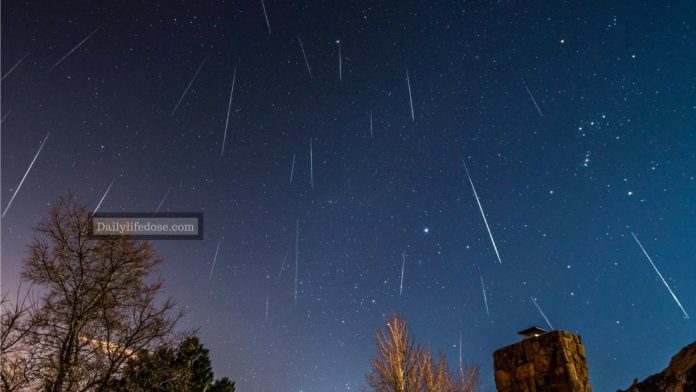There are many spectacles in the Universe from stars, comets, planets, meteors, and asteroids. Even our solar system is filled with many wonders that humans haven’t even gotten to the bottom to every one of it. But one thing is for sure that everything related to space and universe attracts everyone. Especially meteor showers attract the eyes of everyone. You don’t need expensive telescopes or other special equipment to watch meteor showers like other universal spectacles like planets.
Meteor Showers
Meteor showers are very enticing to watch as when the meteors pass through the earth’s atmosphere, they disintegrate, start burning and produce a bright light when it passes through it. If you don’t know what are meteors showers then they are the same as meteors but in greater numbers. A meteor shower occurs when earth’s orbit collide with the debris in space left by comets or asteroids.
What do you know about Old Technology?
Geminids
Though Meteor showers can occur any time of the year, some meteor showers have a definite time and happen same time every year like Geminids, which occurs in December every year and has been observed since 1862. Geminids occurs when the earth goes through a trail of debris from the 3200 Phaethon, an asteroid that revolves around the sun. They are named Geminids after Gemini constellation, which is radiant for this meteor shower. Radiant is the point from which the meteors seem to appear when seen from the earth.
Geminids stared as nothing special with only 10-20 meteors an hour in its early days but over time it has become a major display. Now it can have over 120-160 meteors an hour that provide a very good view. Geminids is the best meteor shower that occurs every year in December from 4th – 23rd and is at its brightest from 13-14 December. But this year Geminids may be even more magnificent as their parent asteroid 3200 Phaethon will pass the earth through its closest proximity since its discovery in 1983.
101 Technology That Changed The World
Geminids are spectacular not just because of the sheer number of meteors that it produces every year, but because it is one of the two only known meteor showers that don’t originate from a Comet. Usually, meteor showers are originated from debris left by comets when they pass around the sun. The comets are made up of ice whereas 3200 Phaethon is an Asteroid also known as rock comet constitutes rock and stone. It is very confusing to classify it as asteroid because its orbit on which it revolves around the sun is elliptical like comets instead of circular like other asteroids. When distinguishing it as a comet, it is made up of rock, not of ice and it doesn’t glow like other comets when it passes the sun.
Best time and place to watch Geminids
Geminids are the brightest meteor shower that you can see in a year and you won’t need binoculars or telescopes to view them. The Geminids are at its peak from 13th – 14th December. You can watch Geminids at around 10 PM on 13th and the best time is the early hours of 14th i.e. 2 AM- 3 AM. The later it is, the better it is. Though it favors the northern hemisphere more, you can see the Geminids even from the southern hemisphere. It can be viewed from all locations on the world.
When you go to watch for the Geminids, make sure that there isn’t any bright source of light near you. Moonless nights are the best if you want to want to watch meteor showers as even its faint light can hinder the light of meteor showers. Also, it would be best to go to a place outside the city with less pollution but even in cities, you can watch them late at night.
Top Ultra speed Supercar of the year – My favourite
3200 Phaethon
Discovered in 1983 by NASA, the asteroid is named after Phaethon, the son of Greek Sun God Helios. 3200 Phaethon is 3 miles or 5 KM wide and is the only named asteroid that passes the sun through such a close proximity, even than the Mercury’s. It takes about 1.4 years to complete one revolution around the sun. It is not so close that it can go colliding with earth make humans an extinct species like dinosaurs.
It’s highly elongated orbit seems more like a comet than asteroids, that why it is sometimes also called at rock-comet or dead comet. 3200 Phaethon doesn’t produce a tail even when it comes close to the sun like other comets. That’s why scientists are confused that on what they should classify it.
This year, on 16th December, the 3200 Phaethon will brush past the earth with it will reach its closest proximity to earth since it was first discovered in 1983 at 10 million KM away. The next time it will pass this close to earth will be after 76 years in the year 2093.
If you think you can just go outside and watch the Phaethon as it approaches earth, you can as the size is less as compared to the closest distance from earth. You would need a telescope if you want to watch it.
The rare pairing of Geminids and 3200 Phaethon has made the space enthusiasts even more excited than ever.












